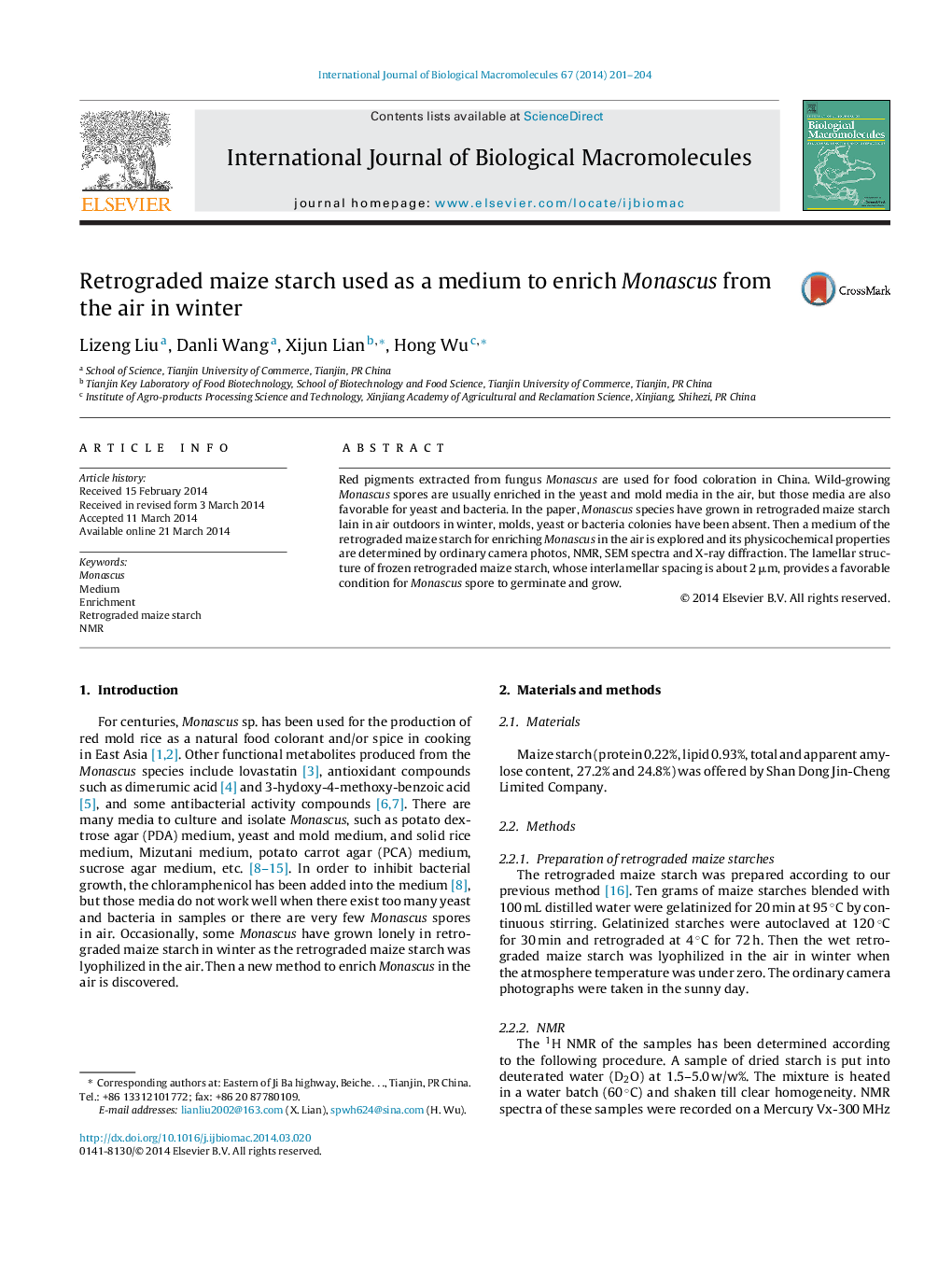| Article ID | Journal | Published Year | Pages | File Type |
|---|---|---|---|---|
| 8332970 | International Journal of Biological Macromolecules | 2014 | 4 Pages |
Abstract
Red pigments extracted from fungus Monascus are used for food coloration in China. Wild-growing Monascus spores are usually enriched in the yeast and mold media in the air, but those media are also favorable for yeast and bacteria. In the paper, Monascus species have grown in retrograded maize starch lain in air outdoors in winter, molds, yeast or bacteria colonies have been absent. Then a medium of the retrograded maize starch for enriching Monascus in the air is explored and its physicochemical properties are determined by ordinary camera photos, NMR, SEM spectra and X-ray diffraction. The lamellar structure of frozen retrograded maize starch, whose interlamellar spacing is about 2 μm, provides a favorable condition for Monascus spore to germinate and grow.
Keywords
Related Topics
Life Sciences
Biochemistry, Genetics and Molecular Biology
Biochemistry
Authors
Lizeng Liu, Danli Wang, Xijun Lian, Hong Wu,
